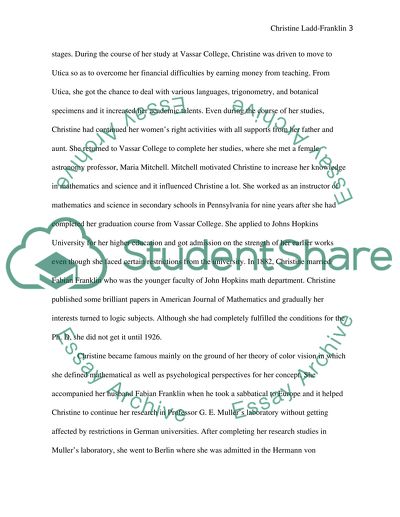Cite this document
(“Christine Ladd-Franklin Research Paper Example | Topics and Well Written Essays - 1750 words”, n.d.)
Retrieved from https://studentshare.org/family-consumer-science/1405814-christine-ladd-franklin
Retrieved from https://studentshare.org/family-consumer-science/1405814-christine-ladd-franklin
(Christine Ladd-Franklin Research Paper Example | Topics and Well Written Essays - 1750 Words)
https://studentshare.org/family-consumer-science/1405814-christine-ladd-franklin.
https://studentshare.org/family-consumer-science/1405814-christine-ladd-franklin.
“Christine Ladd-Franklin Research Paper Example | Topics and Well Written Essays - 1750 Words”, n.d. https://studentshare.org/family-consumer-science/1405814-christine-ladd-franklin.


